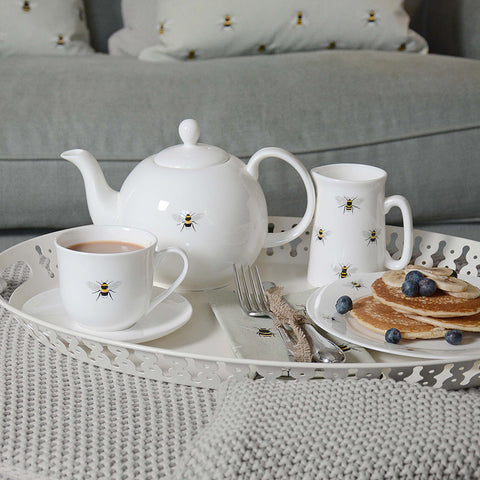National Tea Day! An excuse, if ever one were needed, to put the Sophie Allport teapot range to the test in an exploration of the fascinating and diverse world of tea. Before you dive in, we’ve asked our friend and expert Will Battle (author of The World Tea Encyclopaedia) to address the question of how to make the perfect cup of tea.
- You - As the drinker, you are paramount in the ritual. You have your own unique preferences and tastes. Enforcing a rigid tea-making doctrine overlooks that everyone likes something a little different and seems a little arrogant. So the first lesson is to stick to your guns and if you like your tea a certain way, then to hell with the tea snobs who tell you their method is right.
- The Tea - The start point of a good cuppa must be the tea. It is (by a country mile) the key ingredient. If you start off with good tea then you are 90% of the way there. It is worth trying a few different blends and brands to see what suits you best, they are not all the same. People become impassioned on the loose Vs. bagged tea debate which is very diversionary - the key question is whether the tea inside the bag is any good, and with a spend of just 4 pence per bag in the supermarket, some outstanding tea is within your reach.

- The Dose - Experiment with a dose that suits you whether it is loose or bagged. I know people who use two teabags just as I know those who like to brew the same bag multiple times.
-
The Water - Then comes the water – freshly drawn from the mains. If you find that you are getting an unattractive scum then this is usually down to the water more than the tea. If it is a turn-off then try a water filter rather than buying mineral water - some brands are even more unsuitable than mains water.

-
The Brew - For black tea, boil the water to a rolling boil and pour it directly onto the tea. For the very best green teas use water that is off the boil as the Chinese and Japanese do - you will get a sweeter and more aromatic brew with a less mouth-drying astringency. I brew for 5 minutes at least for a standard black tea - this gives you a chance to taste all of the flavours rather than an unbalanced delivery of colour at the expense of taste.

- The Seasoning - If you like milk or sugar then add it and don’t let anyone tell you that it dulls the flavour. Most black tea blends in the UK are specifically designed to be drunk with milk and taste overwhelmingly strong without it. I like my Assam with lashings of full-fat Jersey cow milk but Darjeeling works brilliantly un-milked making it a favourite of any lactose-intolerants.
- The Vessel - Surely the easiest decision of all - anything from Sophie Allport will do fine! Sit back, relax, and enjoy our national drink in a fine bone china mug or teacup of your choice. Repeat…

Will Battle is the author of The World Tea Encyclopaedia by Troubador Press (400 pages, full-colour hardback, £19.99).






